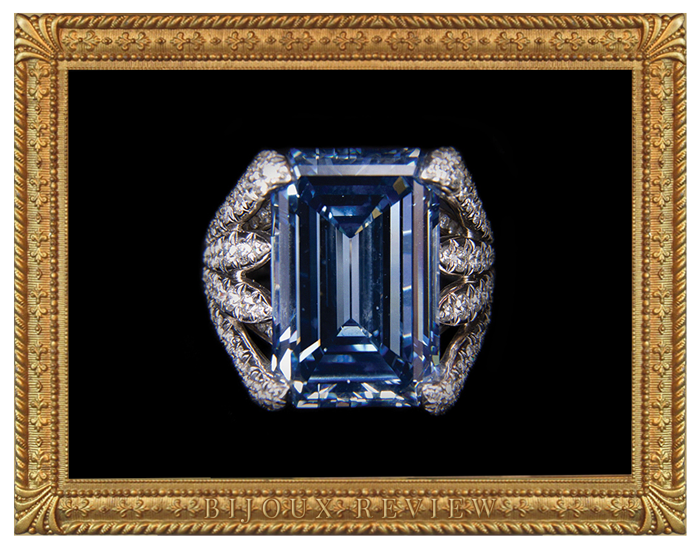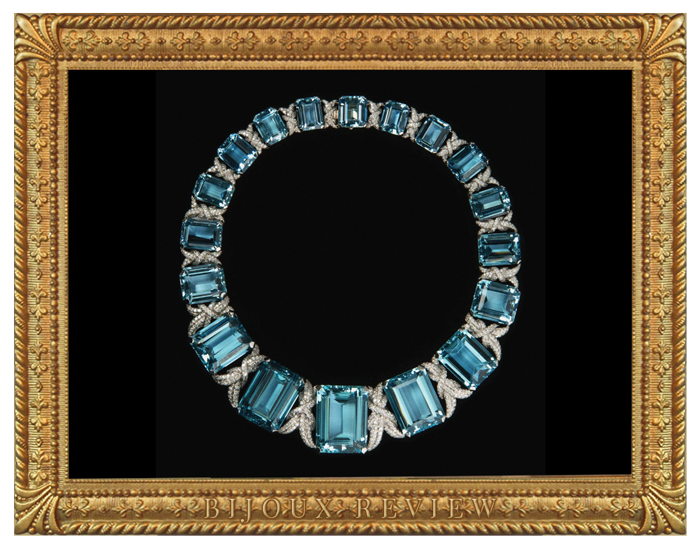This Fall, to mark its 75th Anniversary on New York’s Fifth Avenue, Verdura is celebrating with The Power of Style: Verdura at 75, a retrospective exhibition featuring over 150 jewels created by master jeweler Duke Fulco di Verdura.
Curated by fashion designer Carolina Herrera, her husband Reinaldo and their daughter Patricia Lansing, The Power of Style: Verdura at 75 is the most extensive exhibition in the company’s history. It is open to the public from October 14 thru December 23 at 745 Fifth Avenue, in a new gallery space adjacent to the company’s flagship boutique. Displaying more than 150 of Duke Fulco di Verdura’s original jewels and objets d’art plus examples from his archive of 10,000 gouache jewelry designs, the exhibition also features Verdura‘s charming miniature paintings, period photographs and other intriguing materials related to his life and career.
Sicilian-born Fulco di Verdura in many ways led a charmed life. The duke was a high society figure who also happened to be a gifted artist and Coco Chanel’s principal jewelry designer in the 1920s and 1930s. Verdura stopped designing for Chanel circa 1935-1936, shortly after he created the widely imitated ivory enamel bombé (rounded) cuff bracelets decorated with 18-karat gold Maltese crosses set with cabochon-cut colored stones. These bracelets, which became some of Chanel’s favorite jewels, were widely photographed during her lifetime as she wore them with evening ensembles as well as daytime clothing. In honor of Verdura‘s 75th anniversary, a new interpretation of Maltese cuffs are on offer. These are in black enamel and feature cabochon-cut colored stones.
Between 1934 and 1937, Verdura lived for extended periods in Los Angeles and New York, mixing with other European emigres and trying to find work. His reputation as Chanel’s principal jewelry designer failed to impress L.A.’s comparatively provincial film stars and nouveau riche producers. Verdura found better opportunities in Euro-centric New York, where Diana Vreeland, who was one of Chanel’s most stylish clients, introduced him in 1935 to jewelry designer Paul Flato.
Flato’s customers included Hollywood stars, displaced European royalty and fashion plates like Millicent Rogers, the Standard Oil heiress, plus other social register types. Flato, who freely admitted that he “couldn’t draw a line,” hired Fulco, who immediately distinguished himself as a designer, draftsman and gentleman.
In 1936, Verdura was given what would prove to be a hugely important commission by Broadway and film composer Cole Porter to celebrate the opening of his Broadway show, Red, Hot and Blue. The square platinum case was centered with a detachable round and baguette diamond starburst that could be worn separately as a brooch.Paved on one side with faceted rubies and faceted sapphires on the other, the ground sparkled with small diamond stars, while inlaid gold stars adorn the sides and bottom. This scintillating treasure was featured in Vogue magazine and prominently displayed in the Porter’s apartment. As numerous guests enjoyed examining the box and removing the brooch to marvel over it, Verdura’s name was soon on the radar of New York’s rich and stylish swans.
While visiting Hollywood in March 1938, the Austrian Anschluss was announced. A decorated World War I veteran, Verdura chose to stay in the U.S., far away from unstable Europe where fascists like Hitler and Mussolini were running full speed ahead.
In 1938, Verdura’s friend Cole Porter, together with other investors, backed Verdura by giving him $20,000 to start his own jewelry firm. Moving into 712 Fifth Avenue, premises which Cartier had occupied 30 years earlier, Duke Fulco di Verdura became one of New York’s most in-demand private ‘upstairs’ jewelers, discreetly creating bespoke pieces for his notable friends and clients. Helped by his Cole Porter/Diana Vreeland/Cafe Society connections, business went well from the start, considering how troubled the times were and World War II was heating up.
Fulco’s business partner was Joseph Byrd Mann. Mann had been jeweler Paul Flato’s top salesman and had thus developed the solid business skills which the aristocratic Verdura so flagrantly lacked. (Whenever Mann asked Verdura if he wanted to meet with society lady clients who had just arrived in the jewelry salon, he would instruct: “Tell them that I’ve died.”)
Ward Landrigan purchased the company in 1984, six years after the duke’s death. He says, “For thirty years, it’s been my dream to share Verdura’s genius with a wider audience and bring him the recognition he deserves as the single most influential jeweler of the 20th Century. I want people to know this amazing man, who he was and why his work changed everything. Collectors from around the world have readily agreed to lend us their private treasures for three months and many have shared their reminiscences of time spent with Verdura.”
Carolina Herrera says, “I am honored to be a part of the exhibition celebrating Verdura’s 75th Anniversary. Fulco di Verdura understood how to create elegant, whimsical pieces, two elements not often found in harmony, and he achieved this with such ease. His jewelry is so beautiful and is an ongoing source of inspiration.”
The Power of Style: Verdura at 75, will be open to the public from October 14 thru December 23, 2014, Monday thru Friday from 11:00 am – 5:00 pm and Saturdays starting November 29 from 11:00 am – 5:00 pm and will be held at 745 Fifth Avenue in gallery space adjacent to Verdura’s flagship location. This is a once-in-a-lifetime chance to see an epic array of original Verdura jewels and archival materials in full splendor. (This exhibit is a one-time only event and will not be traveling.)

18-karat gold and diamond “American Indian Tiara” designed for Betsey Whitney. As wife of the U.S. Ambassador to the Court of St. James, she wore it for her presentation to Queen Elizabeth II in 1956. Photo by Verdura. Frame courtesy of EKDuncan.

Circa 1935, Coco Chanel approves of Verdura’s white enameled Maltese cross bracelets, which are studded with cabochon-cut colored stones. Ever since, this style has remained one of Verdura’s perennial best selling jewels and has spawned myriad knock-offs in lesser materials. Uncredited photo. Frame courtesy of EKDuncan.

This platinum Eight Blades ring blazes with blue and white diamonds, centered with a 14.71ct emerald-cut blue diamond. Photo by Verdura. Frame courtesy of EKDuncan.

One-of-a-kind, this brooch was a collaboration between surrealist artist Salvador Dalí and Verdura, both of whom loved mythic tales. The jewel is based on the Greek mythological monster Medusa, who had a hideous face and hissing snakes for hair. While gazing into Medusa’s eyes was said to turn onlookers into stone, this brooch is much safer to contemplate. It comprises 13 intertwined serpents with cabochon ruby eyes that frame a miniature painting of Medusa by Dalí that is set behind a 73-carat morganite. Photo by Verdura. Frame courtesy of EKDuncan.

Fit for a Maharani, this Baroque pearl; Indian-influenced elephant brooch glitters with diamonds, emeralds and other gems. It was made in 1957. Photo by Verdura. Frame courtesy of EKDuncan.

These are the Maltese Cross cuffs that Duke Fulco di Verdura designed for designer Coco Chanel in the 1930s. The mosaic-like setting of the gemstones was inspired by the mosaics in ancient churches in Ravenna, the former capital of the Byzantine empire in Italy. Verdura guided Chanel around Ravenna and other locales, educating her in the history of art as well as European culture. Photo by Verdura. Frame courtesy of EKDuncan.

Intensely blue and massive aquamarines interspersed with diamonds make this 1993 collar an absolute treasure. Photo by Verdura. Frame courtesy of EKDuncan.

Made in 1941, this exquisitely Winged pink topaz, diamond and 18-karat gold brooch was purchased by Hollywood leading lady Joan Fontaine. She wore it in the Alfred Hitchcock classic, Suspicion. Photo by Verdura. Frame courtesy of EKDuncan.

Awesome website Kyle and super interesting and inspiring!
Thank you so much, Ms. Flower. We aim to inspire with high luxury jewelry images, text and recommendations!
Great Article I love the American Indian Tiara I believe it looks amazing.